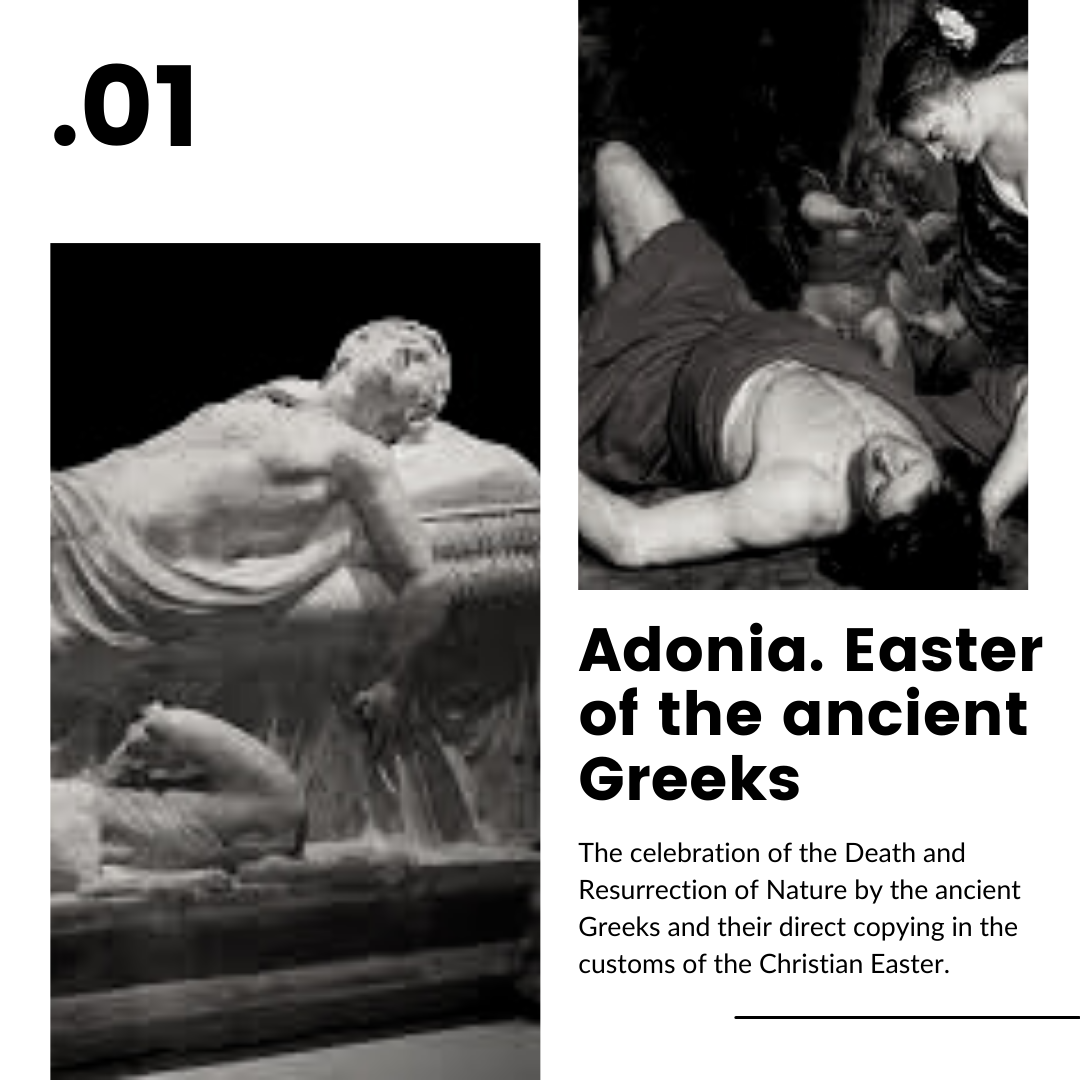
Adonia. Easter of ancient Greeks
The values of Christian Easter, i.e. Death and Resurrection, were also honored in ancient Greece, but in relation to the changes that occur in Nature. Every spring, to honor the god, on the first full moon after the vernal equinox, mainland Greece celebrated the "Adonias", a festival mainly run by women. According to mythology, Adonis was the son of Kinyras and his daughter, Smyrna. Aphrodite was the one that imposed this illicit love on the girl, because she did not honor the goddess. When Kinyras discovered that he had had intercourse with his daughter, full of rage and disgust, he chased her into the mountains to kill her. But Aphrodite preempted and transformed Smyrna into a plant and as the sword cut the trunk, a beautiful baby, Adonis, sprang forth. He was so pretty that Aphrodite hid him in an urn and gave him to Persephone, who lived in the Underworld, to guard him until he came of age. But when the boy grew up, Persephone fell in love with him and refused to give him back. Aphrodite sought the help of Zeus, who ordered the boy to live four months with each of them and four with whoever he wanted. Aphrodite then charmed him with her magic girdle so that he would spend the rest of his time with her, provoking the wrath of Persephone, who sent a wild boar that pierced the boy with its tusks and killed him. Following the legend, the first day of the festival was called "Annihilation" and was a day of mourning for Adonis’ death. Wax or wooden effigies of the god were placed on funeral beds and decorated with flowers, branches and fruits inside the houses, while incense and incense were burned. Afterwards, barefoot women with shaved hair and bare breasts carried the effigies of the god through the streets, mourning and singing special chants, the "Adonidia", accompanied by flutes. They also carried around the so-called "Gardens of Adonis", i.e. pots with plants that grew and withered quickly. At the end, the effigies and the “gardens” were thrown into the sea, in a spring or a river, with pleas for the return of Adonis back from the Underworld. The second day of the "Adonians", named the "Finding", was a day of joy and celebration of his resurrection, during which they sacrificed wild boars and ate rich meals. Adonis is a personification of the mystery of vegetation and his festival was a rite aimed at reviving the earth with the help of water. His death represents the withering of nature in winter and his resurrection her rebirth, with the coming of spring. His stay near Persephone symbolizes the planting of the seed and his return to Aphrodite its germination.
